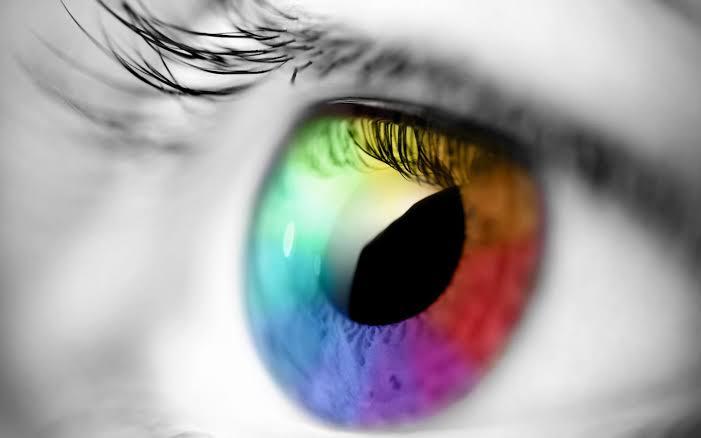Tetrachromacy
Some humans can be tetrachromats, which allows them to see more colors than a normal human.
Rods and cones, they’re the components in your eyes that help you see light and colors. They’re located inside the retina. That’s a layer of thin tissue at the back of your eyeball near your optic nerve. Rods and cones are crucial to sight. Rods are sensitive to light and are important for allowing you to see in the dark. Cones are responsible for allowing you to see colors.
Most people, as well as other primates like gorillas, orangutans, and chimpanzees, even some marsupialsTrusted Source, only see color through three different types of cones. This color visualization system is known as trichromacy (“three colors”).
But some evidence exists that there are people who have four distinct color perception channels. This is known as tetrachromacy.
Tetrachromacy is thought to be rare among human beings. Research shows that it’s more common in women than in men. A 2010 study suggests that nearly 12 percent of women may have this fourth color perception channel.
Men aren’t as likely to be tetrachromats. Men are actually more likely to be color blind or unable to perceive as many colors as women. This is due to inherited abnormalities in their cones.
Tetrachromats have one extra type of cone that allows them to see the fourth dimensionality of colors. It results from a genetic mutation. And there’s indeed a good genetic reason why tetrachromats are more likely to be women. The tetrachromacy mutation is only passed through the X chromosome.
Source: Ultimate Facts
🖼️@https://www.facebook.com/photo.php?fbid=204574502941658
Some humans can be tetrachromats, which allows them to see more colors than a normal human.
Rods and cones, they’re the components in your eyes that help you see light and colors. They’re located inside the retina. That’s a layer of thin tissue at the back of your eyeball near your optic nerve. Rods and cones are crucial to sight. Rods are sensitive to light and are important for allowing you to see in the dark. Cones are responsible for allowing you to see colors.
Most people, as well as other primates like gorillas, orangutans, and chimpanzees, even some marsupialsTrusted Source, only see color through three different types of cones. This color visualization system is known as trichromacy (“three colors”).
But some evidence exists that there are people who have four distinct color perception channels. This is known as tetrachromacy.
Tetrachromacy is thought to be rare among human beings. Research shows that it’s more common in women than in men. A 2010 study suggests that nearly 12 percent of women may have this fourth color perception channel.
Men aren’t as likely to be tetrachromats. Men are actually more likely to be color blind or unable to perceive as many colors as women. This is due to inherited abnormalities in their cones.
Tetrachromats have one extra type of cone that allows them to see the fourth dimensionality of colors. It results from a genetic mutation. And there’s indeed a good genetic reason why tetrachromats are more likely to be women. The tetrachromacy mutation is only passed through the X chromosome.
Source: Ultimate Facts
🖼️@https://www.facebook.com/photo.php?fbid=204574502941658
Tetrachromacy
Some humans can be tetrachromats, which allows them to see more colors than a normal human.
Rods and cones, they’re the components in your eyes that help you see light and colors. They’re located inside the retina. That’s a layer of thin tissue at the back of your eyeball near your optic nerve. Rods and cones are crucial to sight. Rods are sensitive to light and are important for allowing you to see in the dark. Cones are responsible for allowing you to see colors.
Most people, as well as other primates like gorillas, orangutans, and chimpanzees, even some marsupialsTrusted Source, only see color through three different types of cones. This color visualization system is known as trichromacy (“three colors”).
But some evidence exists that there are people who have four distinct color perception channels. This is known as tetrachromacy.
Tetrachromacy is thought to be rare among human beings. Research shows that it’s more common in women than in men. A 2010 study suggests that nearly 12 percent of women may have this fourth color perception channel.
Men aren’t as likely to be tetrachromats. Men are actually more likely to be color blind or unable to perceive as many colors as women. This is due to inherited abnormalities in their cones.
Tetrachromats have one extra type of cone that allows them to see the fourth dimensionality of colors. It results from a genetic mutation. And there’s indeed a good genetic reason why tetrachromats are more likely to be women. The tetrachromacy mutation is only passed through the X chromosome.
Source: Ultimate Facts
🖼️@https://www.facebook.com/photo.php?fbid=204574502941658




